| T O P I C R E V I E W |
| Francesco |
Posted - 26/05/2013 : 18:19:55
During the last two weeks I was absent from the Forum.
I made an entomologic /touristic travel in Crete (Greece), where I had the opportunity to collect a certain number of Cerambycids.
Most of them are new for the Forum, some for the Web as well.
I start here with Purpuricenus desfontainii (Fabricius, 1793), Trachyderini.
Heraklion pref., Preveli Monastery, 15.V.2013

519.78 KB
This pair was remarked by my wife (who I thank a lot   ) on flowers of Onopordum acanthium L. ) on flowers of Onopordum acanthium L.
All adults were captured on flowers of this plant. |
| 9 L A T E S T R E P L I E S (Newest First) |
| Francesco |
Posted - 06/07/2014 : 10:10:59
Bonjour Gerard,
selon moi la division en sous-espèces devrait être repensée.
En effet on trouve en Grèce continentale des exemplaires perfaitement (ou moins apparemment) identiques aux ceux de Crête, c'est à dire aux épaules noires (voire ici, ici et ici) et je peu ajouter ici un couple, encore, de Khytira (Diakofti, 4.VI.2014):
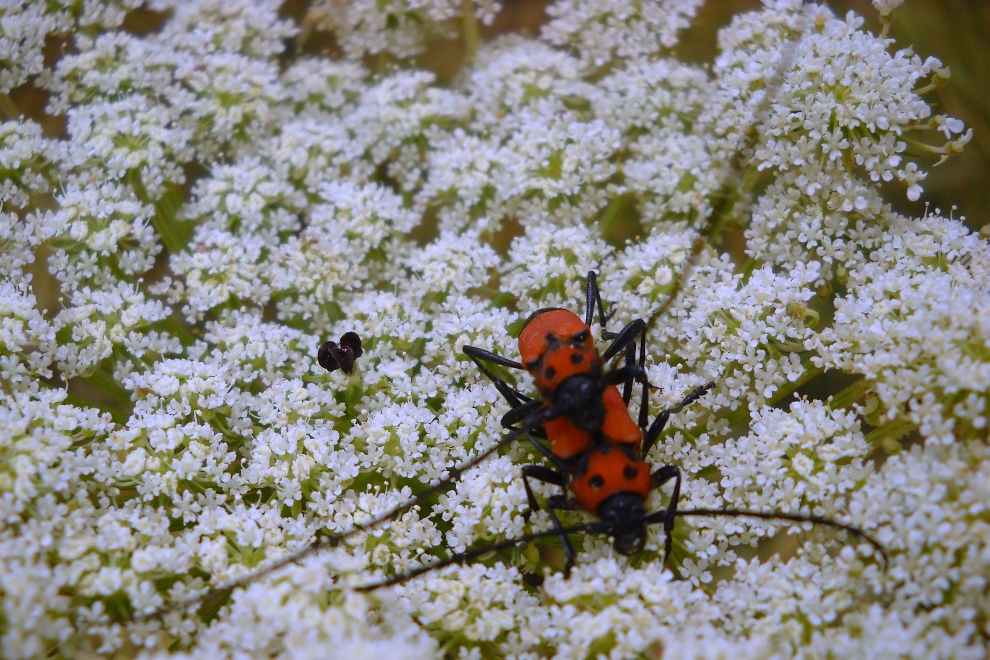
375.1 KB
Par ailleurs, on trouve des exemplaires comme-ça même en Afrique du Nord (par example ici) et j'ai toute une série du Maroc que ne diffère rien des exemplaires crétois.
Encore, la distribution disjointe Afrique+ Crête pour la ssp. typique et Grèce+Turquie pour inhumneralis n'a aucun sens du point de vue biogéographique, à cause des fonds marins de 2000 mètres qui séparent Crête de l'Afrique... mais il y a aussi la possibilité qu'il s'agit d’exemplaires emportés.
Jusqu'à présent il me semble que on peu parler d'une tendance à avoir d'exemplaires plus clairs au Nord et plus foncés au sud... mais sans former des sous-espèces toujours bien definies.
Bon, à suivre, donc! |
| Gerard |
Posted - 06/07/2014 : 09:27:45
Bonjour Francesco, j'ai suivi ton poste très intéressant.
Si je ne me trompe pas :
Purpuricenus desfontainii (Fabricius, 1793)
Le type de Fabricius vient d'Afrique du Nord (Algerie)
Espèce qui a des épaules bien noires.
Purpuricenus desfontainii inhumeralis Pic, 1891
Le type de Pic vient de Turquie
Espèce qui a les épaules rouges ou très peu marquées de noir.
La question que je me pose c’est :
Trouve-t-on l’espèce à épaules rouges en Afrique du Nord et vice versa ? |
| Francesco |
Posted - 06/07/2014 : 08:28:11
Here another picture, taken by my wife Otilia (same place, same day):
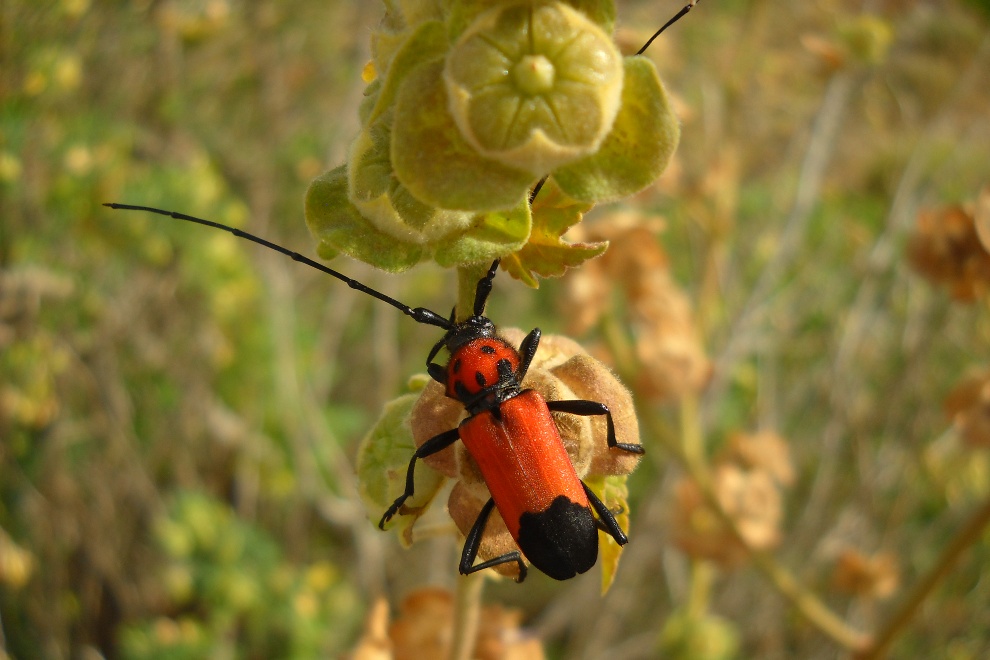
170.46 KB
In both specimens, the black coloration on the shoulders is a bit more extended. |
| Francesco |
Posted - 06/07/2014 : 08:24:16
Better pictures I could take on the island Kythira, on the Avlemonas beach, some days after.
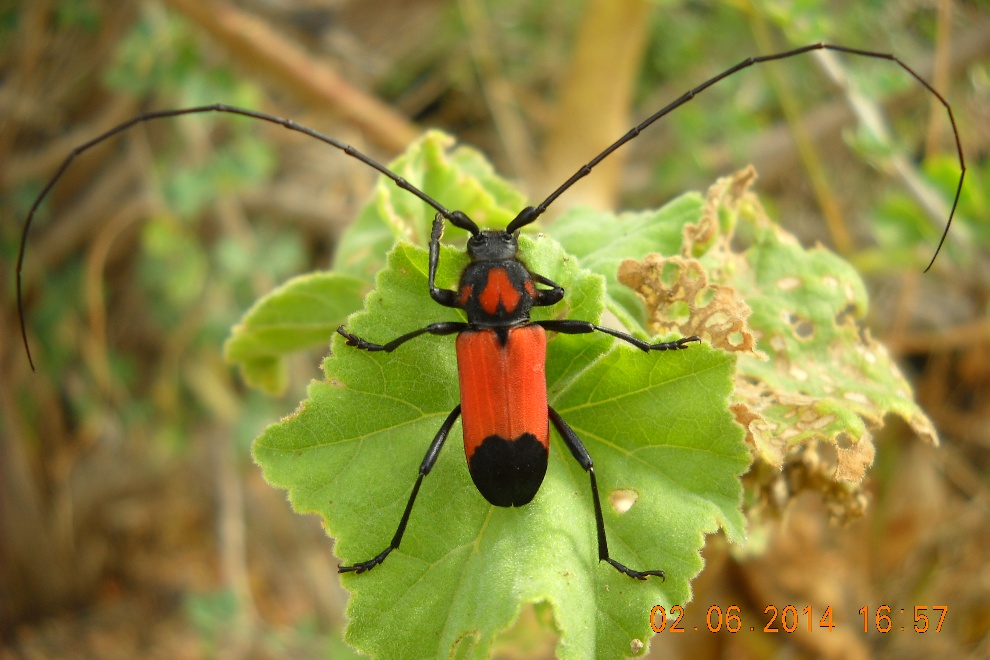
204.09 KB |
| Francesco |
Posted - 06/07/2014 : 08:10:40
Then, I collected a female and I took a picture in my room... but the yellow wall of the room made it very similar to an horrible artifact... 
 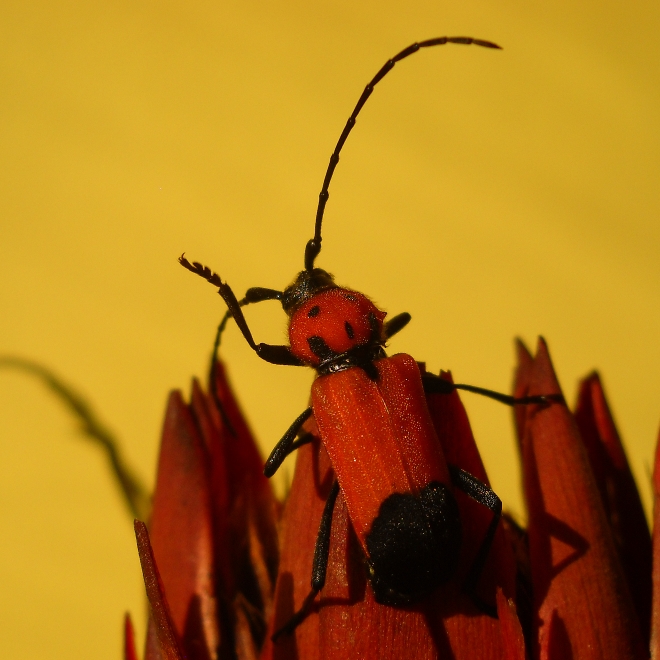

In these specimens the red coloration is more extended on the shoulders, but I have to prepare all specimens to make further considerations.
Generally, the specimens of Peloponnese are larger than those of Crete. |
| Francesco |
Posted - 06/07/2014 : 08:05:53
Coming back to this topic... and to Greece; I had the opportunity to take some pictures of the populations of Peloponnese during last May.
Here a pair photographed on the isle Elafonissos, 31.V.2014
This is - unfortunately - the best picture I have taken (and conserved)... the wind blew very hard!
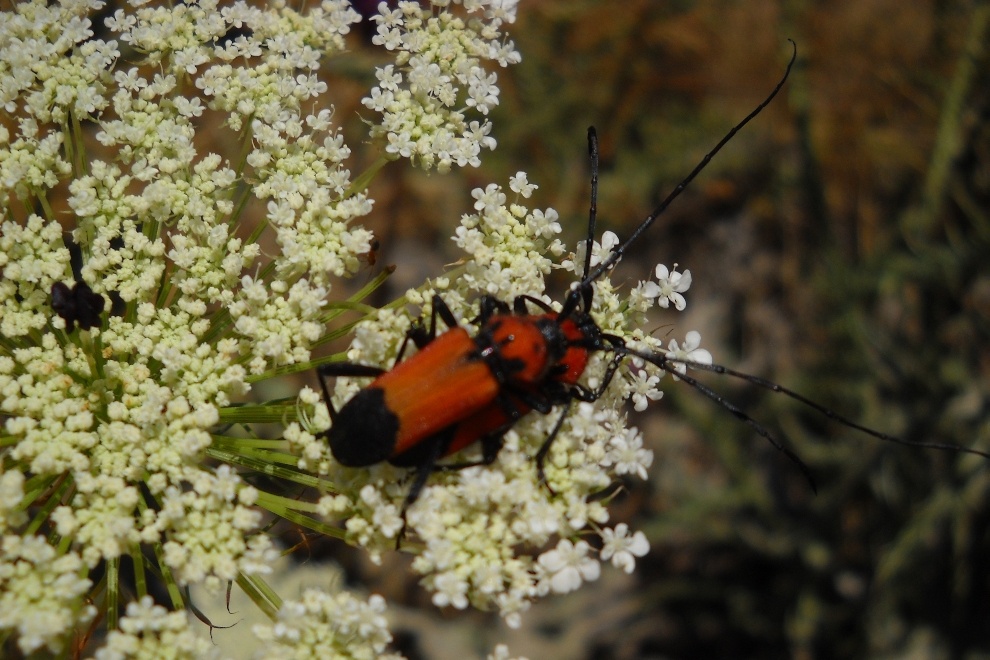
249.31 KB |
| Xavier |
Posted - 26/05/2013 : 19:15:43
Very nice report Francesco  . Thank you. . Thank you.
I hope to see this species in natura one time... |
| Francesco |
Posted - 26/05/2013 : 18:29:07
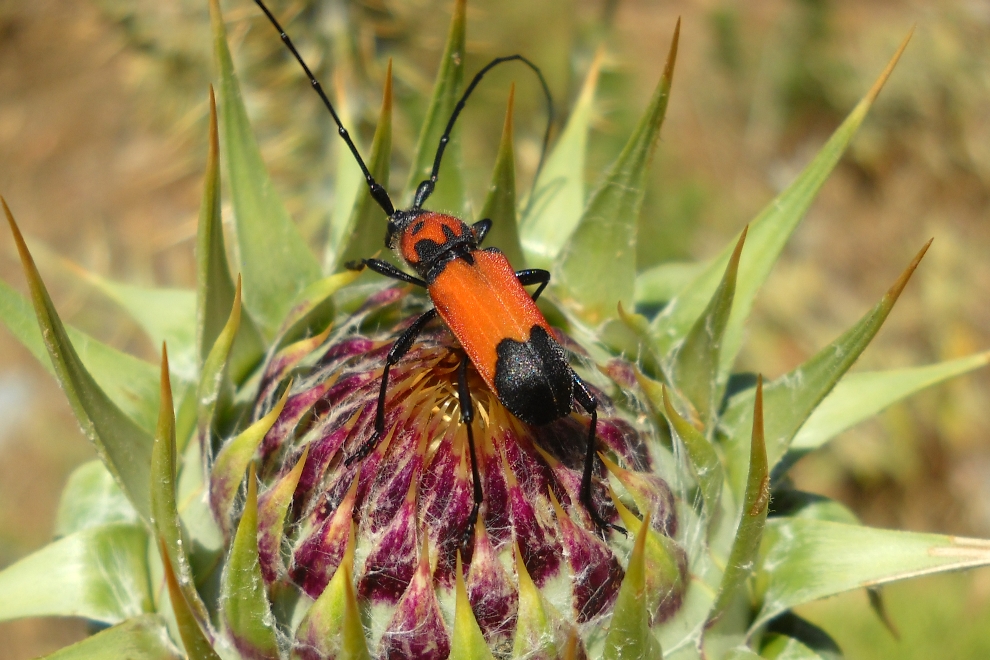
504.48 KB
Another male.
According to some authors the species includes two subspecies:
- the typical form, present in North Africa and Crete
- the ssp. inhumeralis Pic, 1891, in Greece and Turkey.
The former form has black humeri, the latter red humeri.
However, this position is not accepted in BioLib since it does not correspond to the reality.
In fact, the typical subspecies (with black humeri) is present in continental Greece as well (specimens here, here and here).
In contrast, some North African specimens (here) have much larger black spots, which are unknown in Cretan specimens.
Thus, inhumeralis must be correctly considered as a variety (chromatic form). |
| Francesco |
Posted - 26/05/2013 : 18:27:04
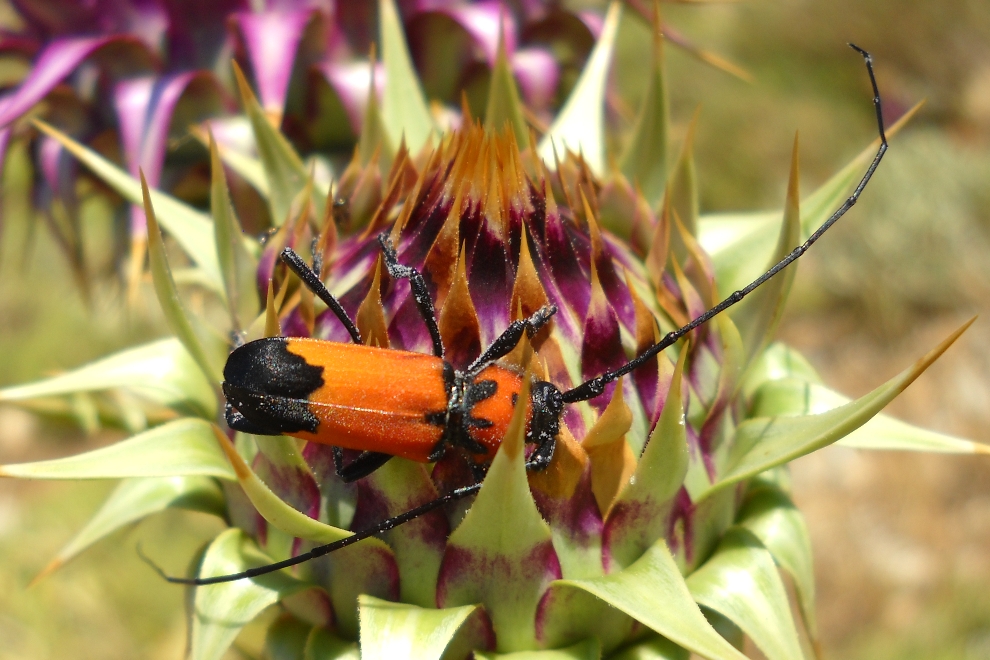
479.99 KB
Here another male.
This species is widespread throughout the island, being sometime fairly abundant.
Its larva bores Quercus ilex, Ceratonia siliqua, Zyzyphus sp. and Pistacia lentiscus.
Only the latest one of these plants was present in the area surrounding the collecting locality. |
|
|


